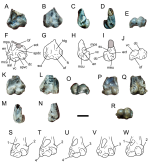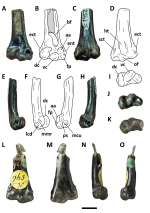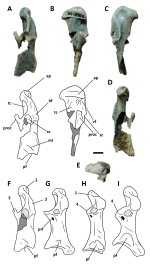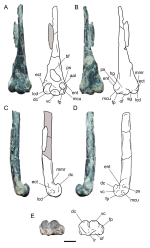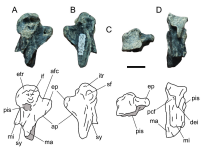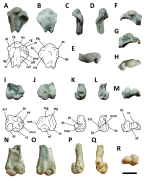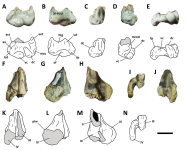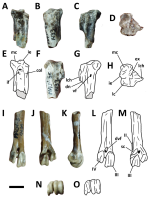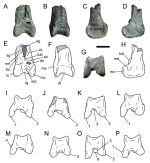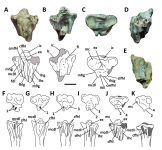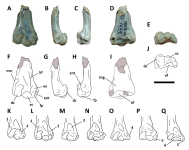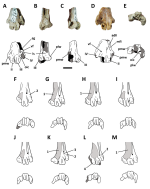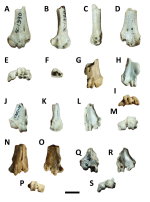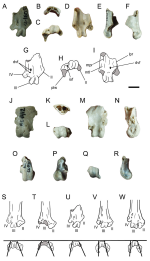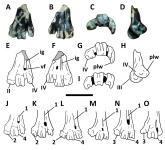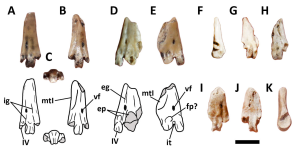Fred Ruhe
Well-known member

A paper I overlooked:
Federico Lisandro Agnolin, 2022
New fossil birds from the miocene of Patagonia, Argentina
Nuevas aves fósiles del mioceno de Patagonia, Argentina
Poeyana Revista Cubana ddr Zoolo9gía 513 (Januari-December 2022)
Abstract and free pdf: Vista de Nuevas aves fósiles del mioceno de Patagonia, Argentina
The present contribution aims to describe new fossil bird remains coming from early-middle Miocene beds (Pinturas and Santa Cruz Formations) in Santa Cruz province, Patagonia, Argentina. These include a new tinamid, a basal anseriform, one anhimid, two new tadornine ducks, possible gruid, psophiid, and parvigruid cranes, an uncertain falconid, a new species of the falconid genus Thegornis, a possible sophiornithid, a coraciid, and remains of innominate rallids, phoenicopterids and passeriforms of the clade Tyranni. If correctly identified, the gruid represents the oldest record for the clade in South America and one of the few findings of the group in the entire continent. The sophiornithid and parvigruid may constitute the first record for each clade in South America. The psophiid may constitute the first fossil record for the clade worldwide. The coraciid represents the first record for the family in South America and both the youngest and second record for coraciiforms in the continent. This, together with the gruid, constitute members of bird clades that were geographically widespread by Paleogene and early Neogene times, but now are restricted as relicts to the Old Word and North America. Their extinction from the Neotropical Region is still uncertain. The presence of at least three different members of Tyranni, reinforces previous thoughts sustaining a long and complex history of the subclade, and passeriforms as a whole, in South America.
Enjoy,
Fred
Federico Lisandro Agnolin, 2022
New fossil birds from the miocene of Patagonia, Argentina
Nuevas aves fósiles del mioceno de Patagonia, Argentina
Poeyana Revista Cubana ddr Zoolo9gía 513 (Januari-December 2022)
Abstract and free pdf: Vista de Nuevas aves fósiles del mioceno de Patagonia, Argentina
The present contribution aims to describe new fossil bird remains coming from early-middle Miocene beds (Pinturas and Santa Cruz Formations) in Santa Cruz province, Patagonia, Argentina. These include a new tinamid, a basal anseriform, one anhimid, two new tadornine ducks, possible gruid, psophiid, and parvigruid cranes, an uncertain falconid, a new species of the falconid genus Thegornis, a possible sophiornithid, a coraciid, and remains of innominate rallids, phoenicopterids and passeriforms of the clade Tyranni. If correctly identified, the gruid represents the oldest record for the clade in South America and one of the few findings of the group in the entire continent. The sophiornithid and parvigruid may constitute the first record for each clade in South America. The psophiid may constitute the first fossil record for the clade worldwide. The coraciid represents the first record for the family in South America and both the youngest and second record for coraciiforms in the continent. This, together with the gruid, constitute members of bird clades that were geographically widespread by Paleogene and early Neogene times, but now are restricted as relicts to the Old Word and North America. Their extinction from the Neotropical Region is still uncertain. The presence of at least three different members of Tyranni, reinforces previous thoughts sustaining a long and complex history of the subclade, and passeriforms as a whole, in South America.
Enjoy,
Fred




